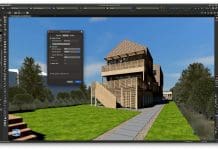Nick Nisbet examines how we ensure that infrastructure doesn’t get left behind in the BIM journey…
The lorries took the ‘B of the Bang’ sculpture away. Perhaps they should have also taken the B of the BIM.
Is BIM exceptional? It is simply sharable, structured asset information. It isn’t about a process X or application Y. It stands before these, in its own right as a good lean idea, just as in any industry. It doesn’t depend on collaboration, or a shift in anyone’s culture or a shift in the zeitgeist. How widespread that sharing is, depends on your workplace and contractual relationships. All this talk about collaboration or cooperation is just a temporary side-show whilst we get the verifiable contracts in place. But it must be structured: drawings, emails, reports are sidings, at the end of the information train line and these are coming to their buffers.
Structured information isn’t structured around line-styles, or fonts: it’s structured around named, discrete assets. It’s about ‘objects’ or ‘assets’ such as facilities, sites, projects, and it’s about equipment, locations and tasks. It’s organised through zones, regions/floors, through systems and specific types, through job-plans and work-packages.
And let’s not forget to ask why? If the UK government documents from 2009-2011 tell us anything, it is because we need comparability, not just of whole facilities, but system by system, location by location.
So how did infrastructure get separated from buildings? Is it that buildings were in a worse place so BIM is needed for it to catch up? Or was it that infrastructure was in a worse place so BIM (or some other name like IIM) is needed for it to catch up?
So as part of the government’s internal mandate for BIM, we looked at COBie for all: can infrastructure be represented as assets? Are the problems mostly about vocabulary, or is there something fundamentally different?
Having had the chance to look at both, from the point of view of the Treasury, client bodies, contractors and designers, the answer seems more subtle. For buildings BIM is bedding in well with designers, and contractors are learning, but the asset management remains poor. For infrastructure the asset management is good, the contractors are learning but the understanding at the design/engineering stage is poor. The rest of the supply chain is bewildered but that’s a topic for another day.
Building asset management is still usually event-driven, reactive, haphazard and unappreciated, because there is no strategic backbone. Clients don’t know they want asset information because it hasn’t been offered to them.
The documentation of engineering projects is fine – as documents. Much is done at the level of mapping: take a map, zoom in, remove and add boundary lines. Without representing the assets between the boundary lines, there can be no robust correlation with measurement nor with classifications. Schedules and Tenders may group a simple concrete base as a product or material, or as part of a functional system, perhaps the lighting stands, or as part of a visitable location such as a cycleway. With this easy ambiguity, it is little wonder that subsequent processes are hard to manage.
BS1192 part 4 on the UK use of COBie has some carefully crafted comments on building and infrastructure terminology, along with some detail on linear referencing of positions and attributes, and rotating assets. Now we are addressing level 3, with the IFC’s being extended for alignment curves (a special kind of grid), and work beginning to integrate rail and roads. Will the UK voice be heard on this or on terrain and environmental management? We were at the heart of the development of IFC1, IFC2 and IFC2x3. Why are we letting IFC4 and IFC5 get away? Can we lead the way in demonstrating the benefits of the semantic web for open asset data standards?
So let’s give the last words to Professor Higgins, and his sister: why can’t infrastructure be more like building, and why can’t building be more like infrastructure. If we can achieve this, we might take a real world class lead.
Nick Nisbet
AEC3 UK Ltd
Tel: 01494 714933













